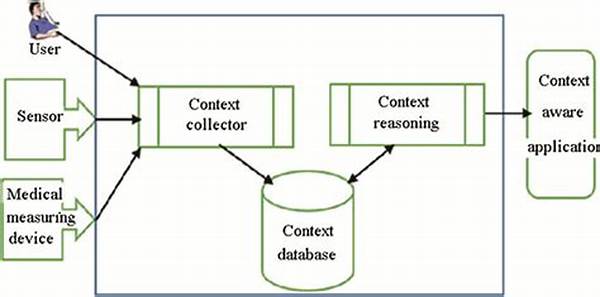H1: Context-Aware Conversation Models
In the bustling domain of artificial intelligence, context-aware conversation models have emerged as the pinnacle of innovation. Imagine a digital assistant that not only listens but fully comprehends the nuances of your vocalized desires, anticipates your needs, and responds with the soft touch of human-like understanding. Such advanced models are no longer confined to the realm of science fiction, but are actively transforming industries, from customer support to digital marketing. This leap in conversational A.I. isn’t merely a technological upgrade; it’s a revolution that empowers businesses to perform more effectively while delivering heightened user experiences. Whether you’re a tech aficionado, a seasoned marketer, or simply someone curious about the marvels of modern A.I., the allure of context-aware conversation models is irresistible.
But what exactly brings these models to life, fueling their capability to navigate and adapt to the intricate webs of human discourse? At the heart of their operations are layers of complex algorithms intertwined with the art of deep learning, seamlessly processing and interpreting the most subtle of conversational clues. By comprehending past interactions and current emotional tones, these models craft responses that are both relevant and personable. No longer do consumers engage with sterile machines; instead, they converse with intuitive entities capable of simulating compelling human interactions.
The Potential of Context-Aware Models
The deployment of context-aware conversation models heralds a new chapter in personalized customer interaction. Imagine contacting customer service and bypassing the tedious chain of repetitive queries. Instead, you’re met by a system that recalls your last conversation, remembers your preferences, and proposes solutions as if it were crafted exclusively for you. Businesses worldwide, eager to harness the increased engagement and loyalty these models foster, are investing heavily in contextually aware A.I. systems. Such initiatives not only bolster customer satisfaction but also significantly cut down operational costs.
A New Era of Interaction
But the story doesn’t end with businesses. On a broader scale, context-aware conversation models are intruding into our everyday lives, albeit with a light-hearted twist. Virtual personal assistants, such as Siri and Alexa, are evolving into more than mere task executors. They’re becoming companions, with a hint of humor and a touch of personality that captivates users. And it’s not just about functionalities—it’s about establishing rapport and making technology feel intrinsically human. How does one resist the charm of an A.I. who’s privy to your life’s quirky details, yet respects your privacy and boundaries?
A Closer Look at Context-Aware Conversation Models
Context-aware conversation models are not just a trend; they’re a paradigm shift in how human and machine interaction is designed. Let’s delve deeper into how these technologies are reshaping the landscape of digital communication.
1. Understanding Human Context
The true allure of context-aware conversation models lies in their impressive ability to capture and process contextual data. Traditionally, chatbots and conversational A.I. systems parsed inputs largely based on predefined scripts. The novelty here is the model’s real-time adaptability, analyzing past interactions, current emotional tone, and specific contextual cues to tailor responses accurately. This capability is steadily propelling these models to the forefront of customer service and user engagement.
2. Key Benefits of Context-Aware Models
As these models gain momentum, what tangible benefits do they bring? For businesses, they represent a reduction in handling times and operational costs. User satisfaction spikes as they encounter more fluid, human-like interactions. Broader adoption across sectors promises efficiency leaps and increased consumer loyalty—a testament to their compelling market proposition.
3. The Technology Behind the Magic
While the output seems simple, under the hood are intricate neural networks and deep learning frameworks. Advanced machine learning algorithms, trained on massive datasets, enable these models to recognize patterns and deliver contextually relevant responses. It’s the fusion of technology and linguistic craft that renders them so potent.
4. Challenges and Opportunities
Despite their burgeoning success, these models aren’t without challenges. Ensuring privacy, maintaining ethical standards, and avoiding bias are paramount concerns. As this field evolves, balancing technology with user rights and ethical deployment remains crucial.
5. The Future of Context-Aware Models
Looking ahead, context-aware conversation models promise a future where interaction with machines is seamless. Whether it’s personalized shopping experiences or enhanced education tools, the applications are boundless. Tomorrow’s users can anticipate a world where their digital and real life interactions are indistinguishably interconnected.
6. Real-World Applications
In real-world settings, these models are already causing ripples. From automating routine transactions to enabling complex decision-making in customer-centric industries, their footprint is vast and growing. This transformative technology waits to redefine our relationship with machines, one conversation at a time.
H2: Mastering Context and ConversationH3: The Journey and Future of Context-Aware Models
In conclusion, context-aware conversation models are not simply an enhancement to existing technologies; they are trailblazing a path toward a digitally enriched future. As these systems become more sophisticated, they’re destined to transform not just businesses but personal user experiences on a global scale. Adapting to this innovation will be not just beneficial but essential in staying ahead in the competitive digital landscape.

